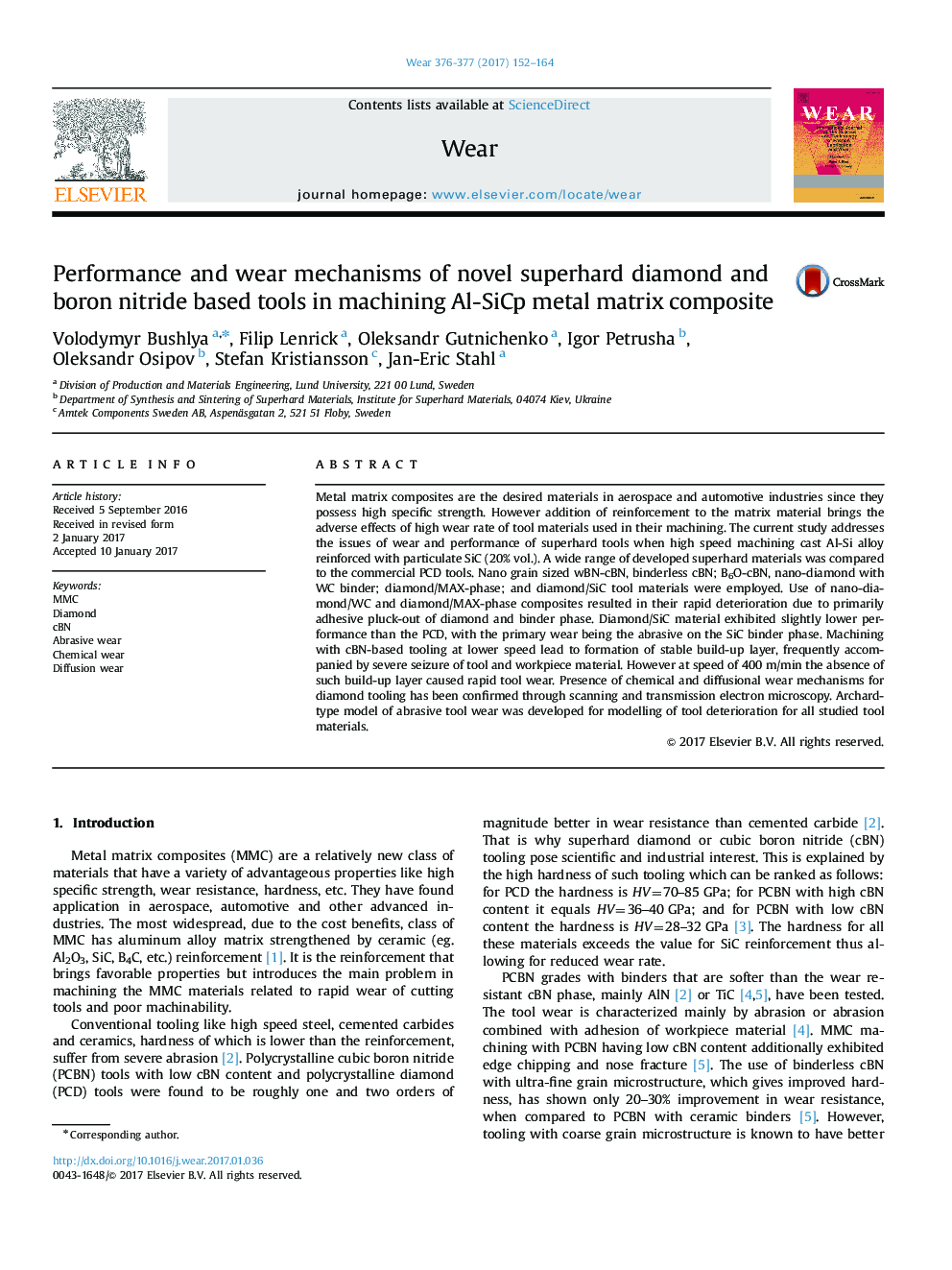| Article ID | Journal | Published Year | Pages | File Type |
|---|---|---|---|---|
| 4986679 | Wear | 2017 | 13 Pages |
Abstract
Metal matrix composites are the desired materials in aerospace and automotive industries since they possess high specific strength. However addition of reinforcement to the matrix material brings the adverse effects of high wear rate of tool materials used in their machining. The current study addresses the issues of wear and performance of superhard tools when high speed machining cast Al-Si alloy reinforced with particulate SiC (20% vol.). A wide range of developed superhard materials was compared to the commercial PCD tools. Nano grain sized wBN-cBN, binderless cBN; B6O-cBN, nano-diamond with WC binder; diamond/MAX-phase; and diamond/SiC tool materials were employed. Use of nano-diamond/WC and diamond/MAX-phase composites resulted in their rapid deterioration due to primarily adhesive pluck-out of diamond and binder phase. Diamond/SiC material exhibited slightly lower performance than the PCD, with the primary wear being the abrasive on the SiC binder phase. Machining with cBN-based tooling at lower speed lead to formation of stable build-up layer, frequently accompanied by severe seizure of tool and workpiece material. However at speed of 400Â m/min the absence of such build-up layer caused rapid tool wear. Presence of chemical and diffusional wear mechanisms for diamond tooling has been confirmed through scanning and transmission electron microscopy. Archard-type model of abrasive tool wear was developed for modelling of tool deterioration for all studied tool materials.
Related Topics
Physical Sciences and Engineering
Chemical Engineering
Colloid and Surface Chemistry
Authors
Volodymyr Bushlya, Filip Lenrick, Oleksandr Gutnichenko, Igor Petrusha, Oleksandr Osipov, Stefan Kristiansson, Jan-Eric Stahl,
